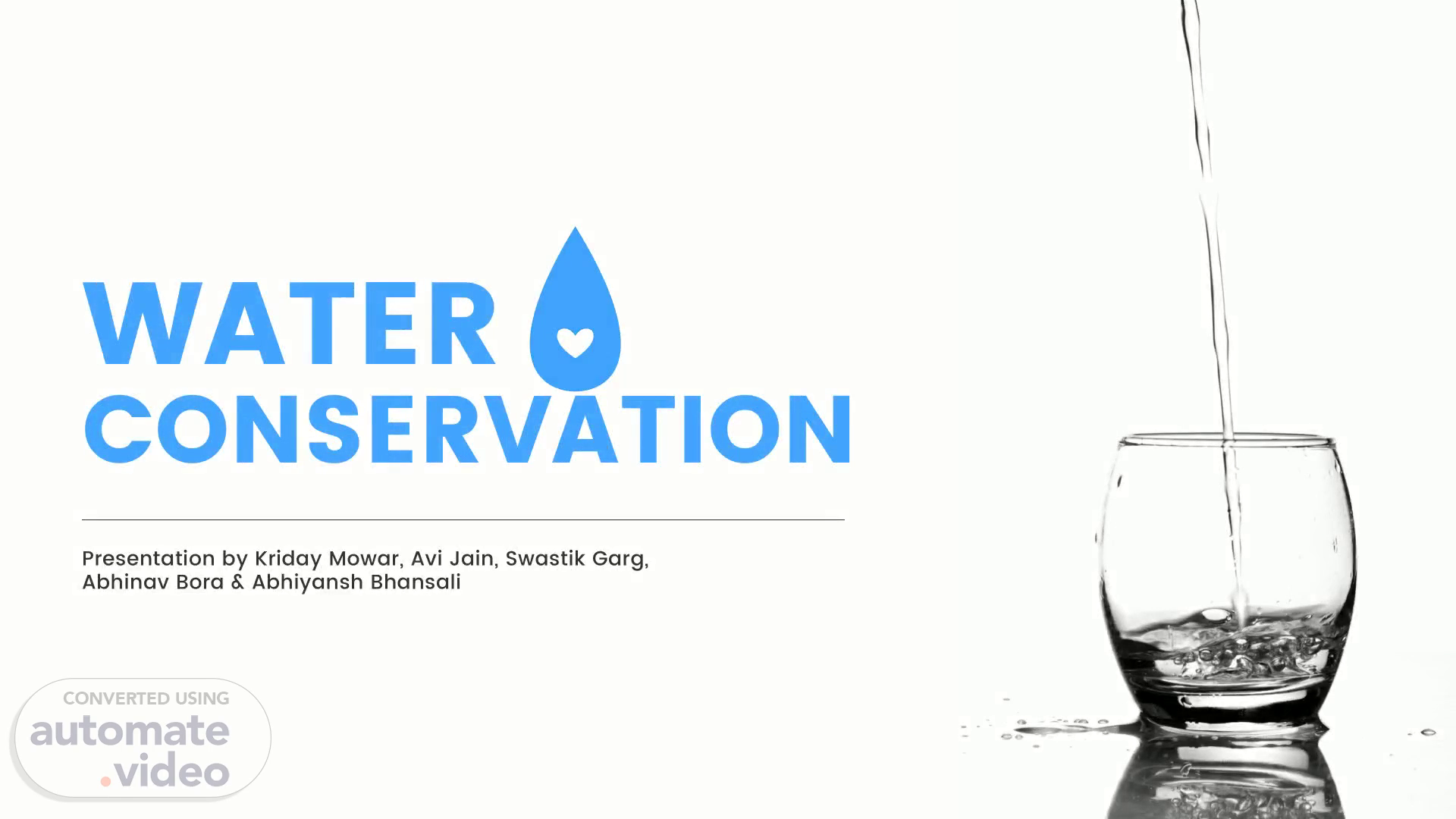Scene 1 (0s)
[Audio] WATER CONSERVATION Presentation by Kriday Mowar, Avi Jain, Swastik Garg, Abhinav Bora & Abhiyansh Bhansali KOTHARI INTERNATIONAL SCHOOL, NOIDA.
Scene 2 (17s)
[Audio] Water Conservation Kothari International School, Noida WATER CONSERVATION * Water conservation includes all the policies, strategies and current activities to sustainably manage the natural resource of fresh water, to protect the hydrosphere and to meet the current and future human demand ( Thus avoiding water scarcity). * Population, household size and growth and affluence all affect how much water is used. Factors such as climate change have increased pressure on natural water resources especially in manufacturing and agricultural irrigation * Many countries have already implemented policies aimed at water conservation, with much success. * The key activities to conserve water are as follows: any beneficial reduction in water loss, use and waste of resources, avoiding any damage to water quality ; and improving water management practices that reduce the use or enhance the beneficial use of water. * Water conservation programs involved in social solutions are typically initiated at the local level, by either municipal water utilities or regional governments. Common strategies include public outreach campaigns, tiered water rates (charging progressively higher prices as water use increases), or restrictions on outdoor water use such as lawn watering and car washing. * The key activities to conserve water are as follows:-Any beneficial reduction in water loss use and waste of resources. -Avoiding any damage to water quality. -Improving water management practices that reduce the use or enhance the beneficial use of water..
Scene 3 (2m 9s)
[Audio] Renovation of traditional and other water bodies/ tanks India is endowed with extraordinarily diverse and distinctive traditional waterbodies found in different parts of the country, commonly known as ponds, tanks, lakes, vayalgam, ahars, bawdis, talabs and others. They play an important role in maintaining and restoring the ecological balance old tanks can be reused by fixing cracks which would prevent water seeping into them and water leakage ponds and lakes can be treated with yeast, fungi and bacteria they can degrade accumulated complex organics and other hazardous substances into less toxic or non-toxic end products Kothari International School, Noida WATER CONSERVATION.
Scene 4 (2m 57s)
[Audio] Water development & Intensive afforestation Watershed development refers to the conservation; regeneration and the judicious use of all the natural resources particularly land, water, vegetation and animals and human development within the watershed. Afforestation is the establishment of a forest or stand of trees ( forestation) in an area where there was no previous tree cover. Afforestation is an increasingly sought-after method to fight climate concerns, as it is known to increase the soil quality and organic carbon levels into the soil, avoiding desertification. -Improving water management practices that reduce the use or enhance the beneficial use of water..
Scene 5 (3m 45s)
[Audio] Kothari International School, Noida WATER CONSERVATION Challenges of Water Conservation The first challenge is water resource protection. Less than 1% of the water on earth is suitable for drinking and as water is a limited resource in most, if not all, countries. The second challenge, which is the use of advanced technology for water treatment reducing water leakages, which occur in every water supply system. This is a major waste of investment as every drop of leakage has been treated to bring it to drinking water standards. -Improving water management practices that reduce the use or enhance the beneficial use of water..
Scene 6 (4m 33s)
[Audio] Thank you. . . . Thank you.
